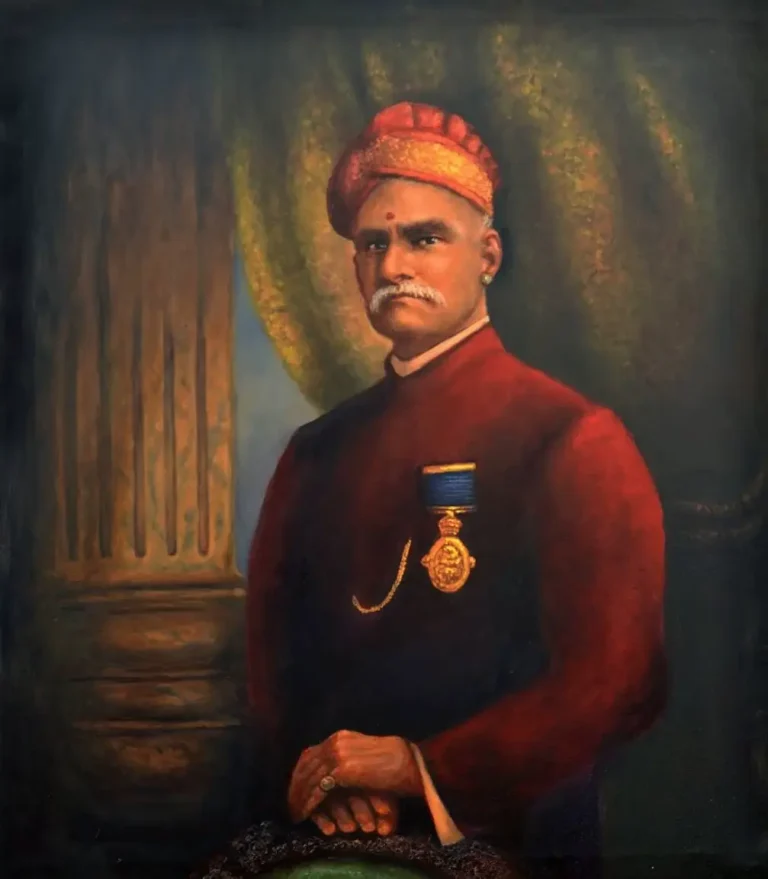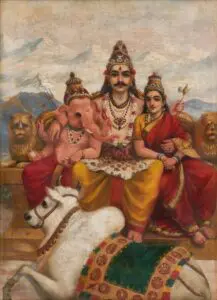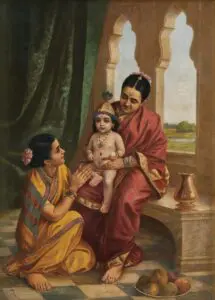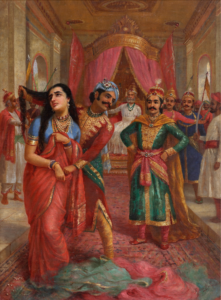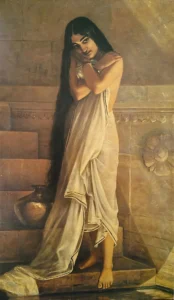Arjuna And Subhadra
Raja Ravi Varma's Arjuna and Subhadra is a captivating painting created in 1890 that illustrates a significant event from the Hindu epic, the Mahabharata. It portrays the moment when Arjuna, disguised as a hermit, abducts Subhadra to marry her, a plot that was orchestrated by Lord Krishna. This charming scene captures the dynamics of their encounter, highlighting the interplay of desire and cultural context in a visually striking manner, exemplifying Varma's unique fusion of traditional Indian art with Western techniques.
Year 1890
About the Artwork
The painting represents a pivotal moment in the Mahabharata, where Arjuna, one of the Pandava brothers, falls in love with Subhadra, the sister of Lord Krishna. To prevent her from marrying the powerful Duryodhana, Krishna devises a plan for Arjuna to abduct her while he is disguised as an ascetic. This bold act not only marks the union of Arjuna and Subhadra but also sets the stage for the birth of their son Abhimanyu, a key figure in the epic narrative. Varma's rendering captures the nuances of this fateful encounter, weaving in elements of love, desire, and the complexities of familial duty.
Did You Know
The marriage of Arjuna and Subhadra leads to the birth of Abhimanyu, who becomes a prominent warrior in the Mahabharata and plays a crucial role during the Kurukshetra war.
Raja Ravi Varma is celebrated as a pioneer in bringing Indian mythology and history to life through his art, influencing the depiction of Hindu deities and epic tales in popular culture.
Varma was among the first Indian artists to adopt oil painting techniques from Europe, merging them with traditional Indian styles, making his artworks stand out in the art scene of his time.





